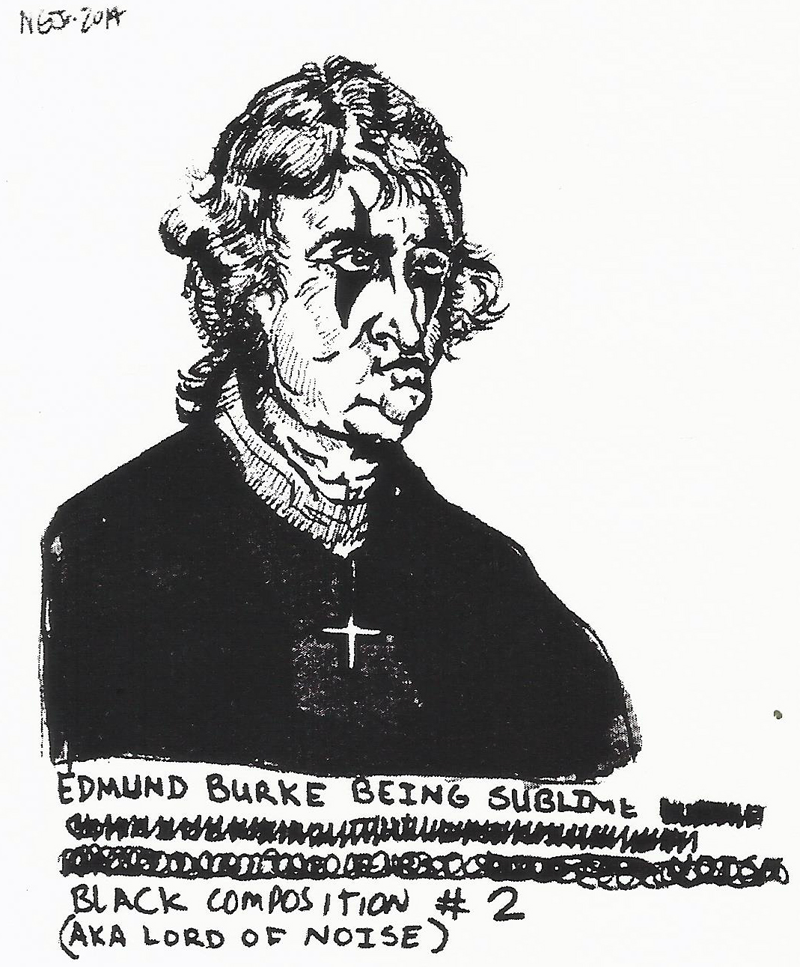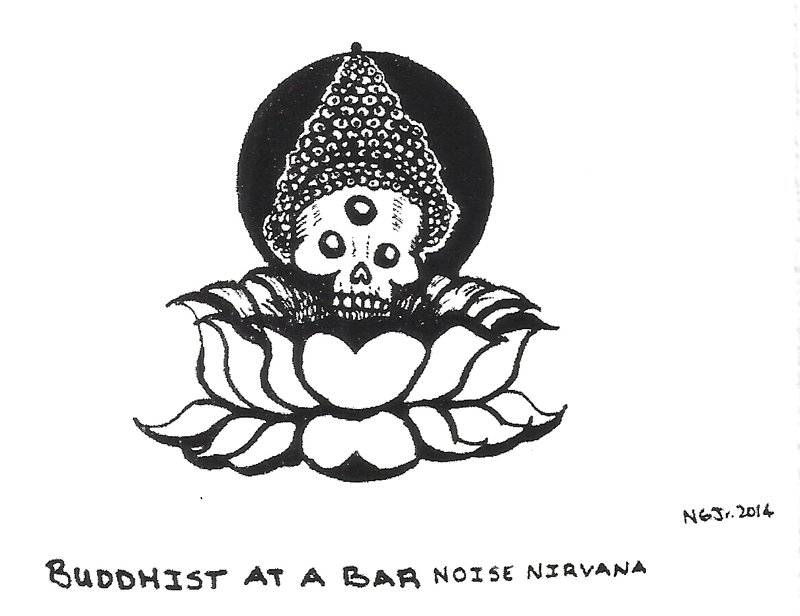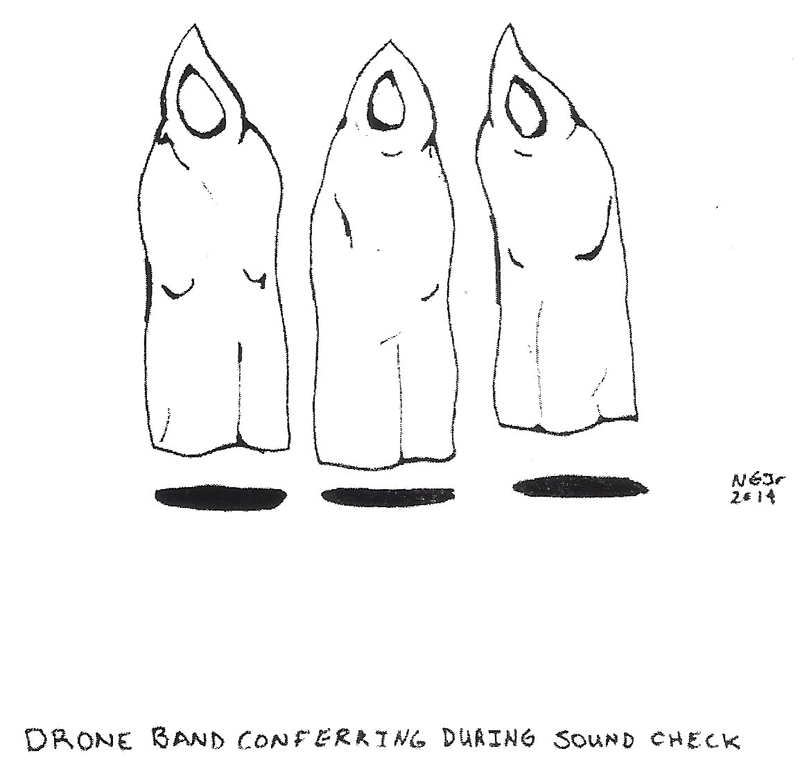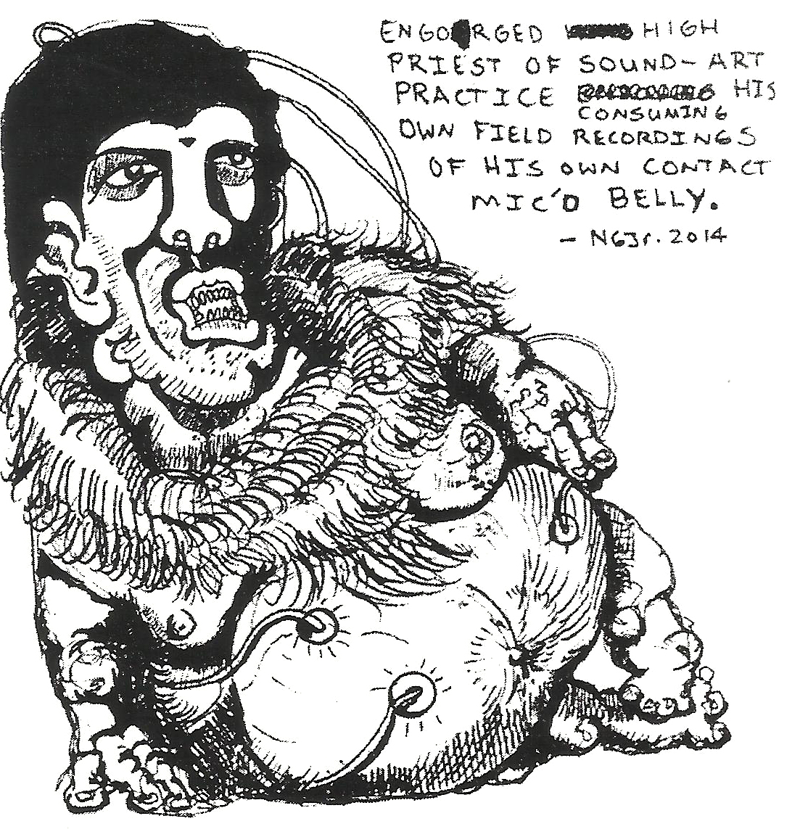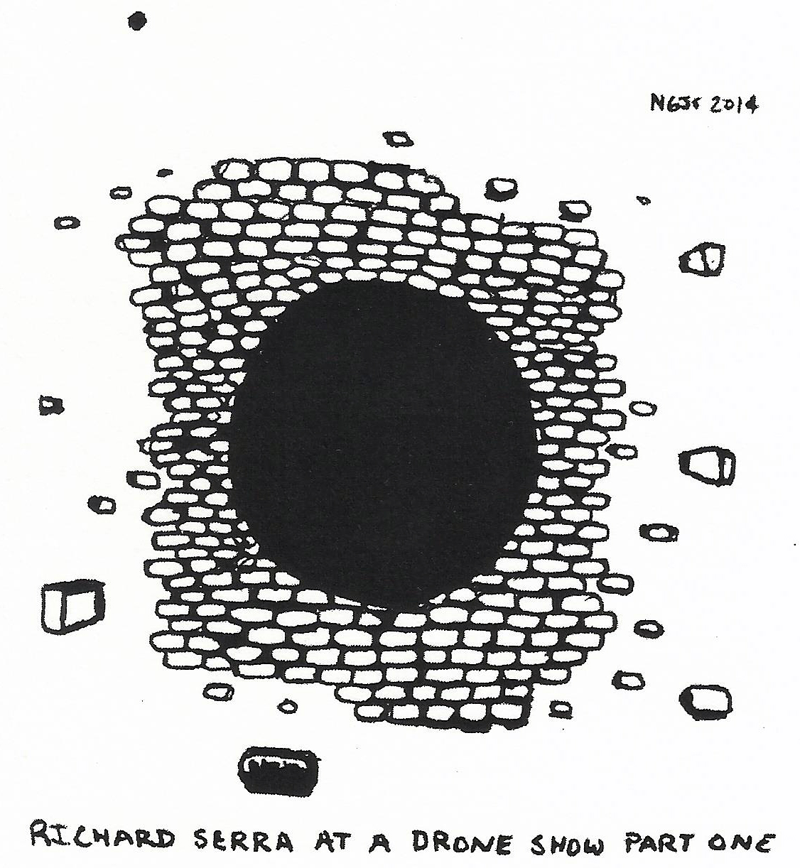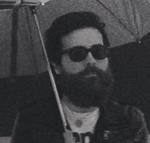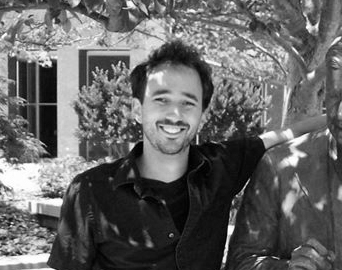Illustrations by the author, screen printed by J. Gomez
*
Section Two: DRONE;
*
A post-review
Everywhere codes analyze, mark, restrain, train, repress, and channel the primitive sounds of language, of the body, of tools, of objects, of the relations to self and others. All music, any organization of sounds is then a tool for the creation or consolidation of a community, of a totality. It is what links a power center to its subjects, and thus, more generally, it is an attribute of power in all its forms.
~Jacques Attali
Richmond, VA—A few years ago I became enlightened, and not in any calming, quiet sense of our modern, rational understanding of “meditative nirvana.” Buddha had it all wrong or we have Buddha all wrong. The enlightenment I write of is a full, physical embodiment of sound and experience. “All things in moderation,” is wrong—a farce. After one’s extremities feel the shaking and tickling of powerful lows and highs—then you can know a pop song and or its opposite. When the loudest of the loud may be coupled with silence in such a way, we have sublime, we have the ability to self-regulate and mix. We often need to wake up.
The first philosopher of noise, Edmund Burke writes on “Sound and Loudness”:
Excessive loudness alone is sufficient to overpower the soul, to suspend its action, and to fill it with terror. The noise of vast cataracts, raging storms, thunder, or artillery, awakes a great and awful sensation in the mind, though we can observe no nicety or artifice in those sorts of music. The shouting of multitudes has a similar effect; and by the sole strength of the sound, so amazes and confounds the imagination, that, in this staggering and hurry of the mind, the best established tempers can scarcely forbear being borne down, and joining in the common cry, and common resolution of the crowd.
And regarding “Suddenness”:
A sudden beginning, or sudden cessation of sound of any considerable force, has the same power. The attention is roused by this; and the faculties driven forward, as it were, on their guard.[*]
For me, this noise nirvana happened in a hole in a wall, a cultural epicenter of the former capital of the Confederacy, Richmond, Virginia: a bar-cade, vegan friendly restaurant and music venue called Strange Matter, formerly Nancy Raygun, among other names. I have learned many things in the space of this bar, and in part, I have gained an appreciation of “extreme” music and subsequently a critical perspective for what is deemed “sound-art” and what isn’t. Over the decades this social-space has existed within the interstices of both a violent, troubling (recent) past, and the rapidly encroaching regulation of institutional gentrification called “progress.” While it is quickly becoming walled in and surrounded, it persists as a relevant sound-space.
Attali’s analysis of sound-codes is correct, and so I must describe our listening-experience today and its social ramifications: mobile phone audio devices, featuring lossy reproduced sound artifacts, amplify sound through our embedded ear-buds. Our standards of audio fidelity are low and so are our lived experiences in which we are universal surveillants—obsessively documenting a rock show with instant image-audio captures, in order to “live” share to our networked friends. We view the rock show through a small screen with the eye of an image critic and event promoter, the event here being our lives. Speed of information figures greatly into this standard, coupled with digital mobility and miniaturization. Our listening experience has undergone another private stage, with the first being the introduction of sound reproducibility of the phonograph (introduced in the late-1800s), allowing sound into our personal interior space. Today we have the sound available as ear-buds—together we listen everywhere alone. Listeners are not so much concerned about sound fidelity (they mostly never were), as much as they are with access, which is confused with “freedom.” As Jonathan Sterne writes:
Engineers reduce dynamic range because to do so makes the recording ‘seem’ louder when compared with other recordings with more dynamic range. The theory is that if two songs on the radio are otherwise of the same quality, the ‘louder’ song will be more likely to catch a listener’s attention. In practice, musicians and producers have come to measure the loudness of their own CDs – whether or not they will appear on radio – against other commercially released CDs, and the result has been a sort of loudness arms race, fueled by new software developments in ‘loudness maximisation’. –[†]
Since today the distinction between private and public spaces is a confusing mess, so too then must be our listening-spaces of a glocalitarian reality. With badly compressed and reduced dynamic ranges, much like commercial music, our reality is mixed like standard, commercial radio—eliminating “unnecessary” aural subtleties between low and high ranges for a more recognizably loud mix, noticeable to mass-consumers. Virilio explains:
As with stereoscopy and stereophony, which distinguish left from right, bass from treble, to make it easier to perceive audiovisual relief, it is
essential today to effect a split in primary reality by developing a stereo-reality, made up on the one hand of the actual reality of immediate appearances and, on the other, of the virtual reality of media trans-appearances.
Our psycho-geographical social relations have become saturated, and we are imprisoned within temporal compression. It is the end of geography—when our everyday experience is itself based on what Virilio calls the substitute or artificial horizon of a “screen or a monitor, capable of permanently displaying the new preponderance of the media perspective over the immediate perspective of space.” It is in this condition that the band SUNN O))) presently thrives and acts as radical departure from—remixing our lived audiovisual reality and engaging in a different sort of “loudness”—one echoing the words of Burke. Although formed in the late 1990s by Stephen O’Malley and Greg Anderson in Seattle, Washington, it is today that the band truly serves us as dark lords of drone metal. It is in these false days that SUNN O))) choose to play so incredibly slow and loud so as to produce in the listener a state of deep listening and a re-grounding of one’s being. They act as facilitators of the rebirth of time and space, for not only is the sensation of listening emphasized, but it is coupled with the physicality of music so low and loud that the experience of hearing coincides with vibrations of one’s body hairs, and tickling ear drums. It can be tiring and complicated as with any important and invigorating experience—like near-death experiences, or especially in this case, rebirth—a total destruction of virtualization.[‡]
Along with this personal physical experience comes an awareness of one’s place in the rock-space and it is recognized as being one with many others. As the hundreds stand alone together, like monads, individually interpreting the experience, the fog machine fills the small space of Strange Matter. Distance between monads is made less perceptible, creating a soft cloud of interaction and collaboration, or community. And on stage the performers dress in black hooded cloaks—barely moving—to be ignored and not ignored within the sound scape. The fact that this deep-listening experience occurs in a bar is an important one, as the event is thus already participating in the important cultural and existential position played by such a place that provides civilization with a “safe” space for imbibing spirits and in this case performing the act of raising spirits.
To be clearer, I must compare this to a different space presenting “similar” sound—the cubed art-space, i.e. gallery or museum. After all, it is early twentieth century theorists and artists who would first support an appreciation of sound or sound as art and an awareness of that which sonically surrounds us each day. Unfortunately, today this appreciation has transformed into academic sound-art, made safe and elite within both the walls of the academy and boundaries of the cubed art-space. While sound art once represented a radically redefining form of sound appreciation and experience, it now mostly disregards popular forms of sound and music making. It is strange that sound-art would now be closed-in to only those things deemed abstract enough, meaning those outside of popular aural spaces, as high Modernism did in the past with medium specificity and the apotheosis of painting which ignored the human form—a residual of Christian Platonism.
The cubed art-space is a self-conscious space of limitation and minor audience participation, versus the rock-space of Strange Matter, featuring the touring SUNN O))). It is clear where the opportunity for larger radical sound reinterpretations might be made. As Futurist Luigi Russolo describes in The Art of Noise, “Noise accompanies every manifestation of our life. Noise is familiar to us. Noise has the power to bring us back to life…Although the characteristic of noise is to brutally bring us back to life, the art of noises must not be limited to a mere imitative reproduction. The art of noises will extract its main emotive power from the special acoustic pleasure that the inspired artist will obtain in combining noises.”[§] O’Malley explains: “…we get the term post-metal… I think the ‘post’ thing is used for people to feel special and new about doing their thing…I wanna get to know what the roots are more clearly, continue trying to discover the elements that are already there. Everything’s already there, so…”[**]
BRUTAL, NOISE, TERROR, THUNDER, RAGING, ARTILLERY, AWFUL, STAGGERING, CRY.
A problem with sound-art aside from its language is its forgetfulness. Its lesson is deep-listening. If so, then its academizing and its silo-presentations within white-spaces mean no-one is listening. SUNN O)))’s dark-art slows down time, two-hours is something felt, bodily. The occasional flesh of a raised hand is seen through the thick fog of the machine. The fog which allows us an image of the formerly mystical unseen interstices between you, me and the rock-space is suddenly thick and material. Augmented reality head-mounted eye-glasses claim to allow you to “be in the moment” expelling clunky media for invisibility, the truly social-experience of nature at the expense of space. On the other hand, a campfire illuminates with jumping flames. The results: shadow-play, campfire songs, the deep, slow stares, and smells of burning wood. The slow media of being-there is not a war against technology, but an acknowledgment of both the parts and the whole. Toggle the light switch, on and off, off and on. Know your neighborhood by deeply-listening and deep-see diving.
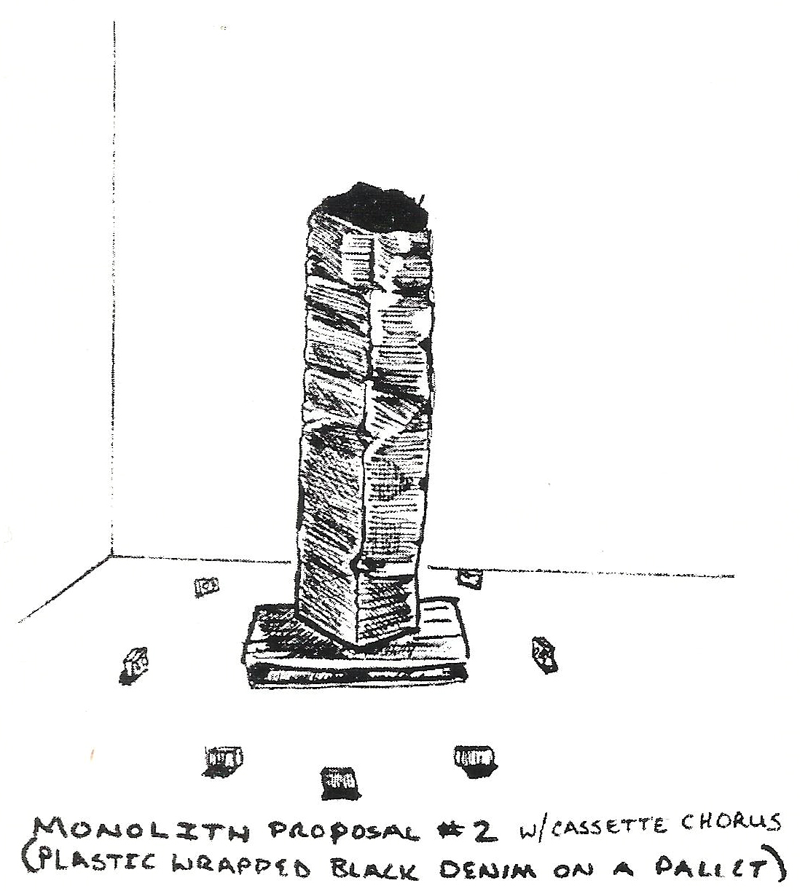
The connections between SUNN O))) and time and space are not exaggerations. While the duo is clearly interested in the theatrics of a performance and the mythos of metal music, there is a very real, concerted effort in engaging with the aforementioned subjects. Monoliths and Dimensions’(2009) cover art features the work of Richard Serra, out-of-round X (1999), a large scale drawing. Serra’s concern, too, is the experience of space, and by creating his more well-known monumental sculptures, which undulate and curve in ever so non-mechanical ways, he radicalizes the experience of a cubed art-space—even deconstructing the traditional museum. While Serra’s sculptures are large, imposing, or monolithic, his drawings are far quieter in their minimalism, with simple gestures of blackness; positioned two-dimensionally across the intersections of a wall they reconfigure spatial perceptions and expectations. The drawing is something of a figure-ground reversal, whose darkness moves both in and out. Sun or black hole, both are related forever in their cycle of life/death/other in and out, light and dark, cosmic consumption, baptism, and at that point of singularity there is a love affair between science and magic.
[*] A Philosophical Enquiry into the Origin of Our Ideas of the Sublime and Beautiful, 1757. [†] “The Death & Life of Digital Audio” 2006. [‡] “the amplification of the optical density of the appearances of the real world” –Virilio, The Information Bomb. [§] Author’s emphasis [**]The Wire UK interview, April 2009.

